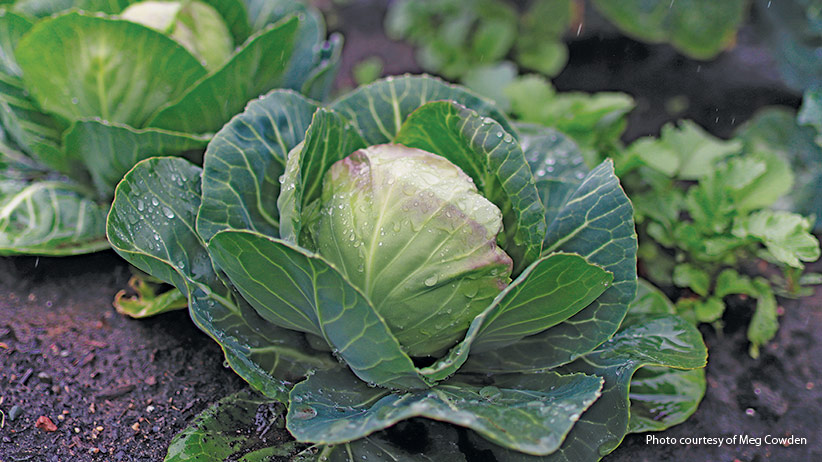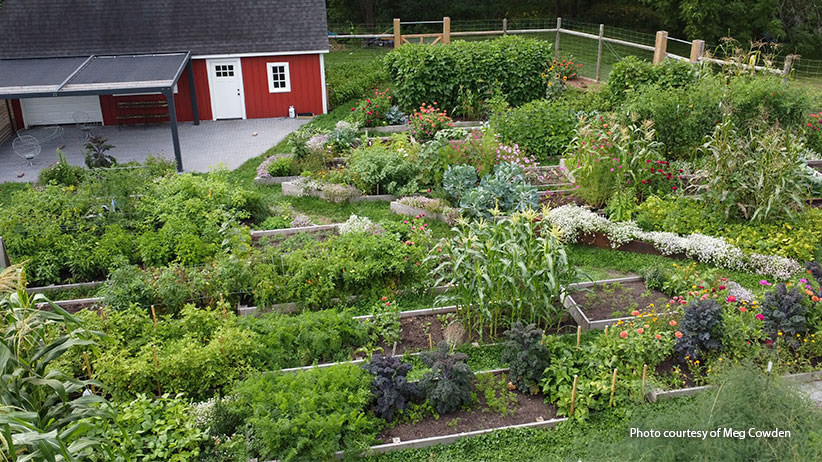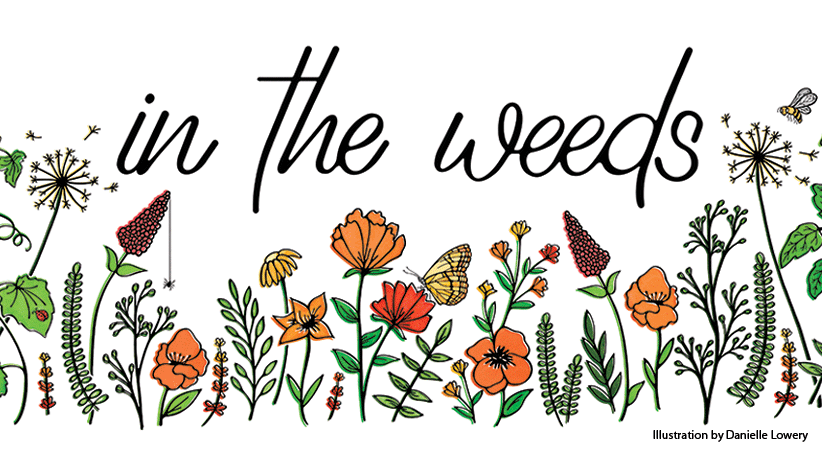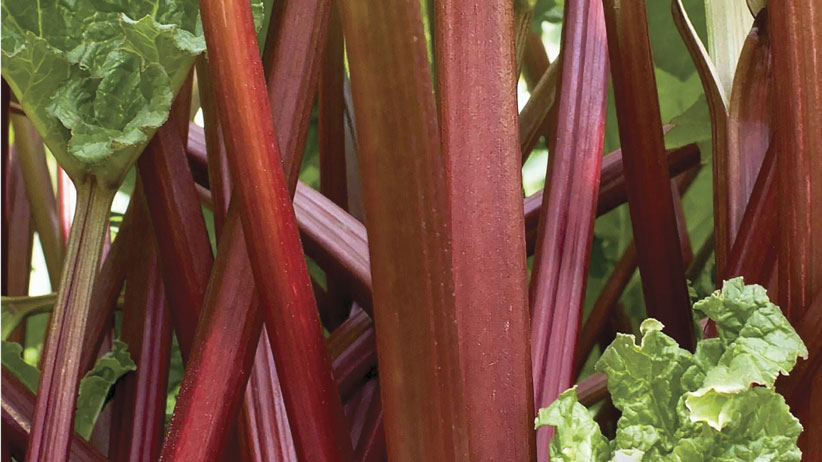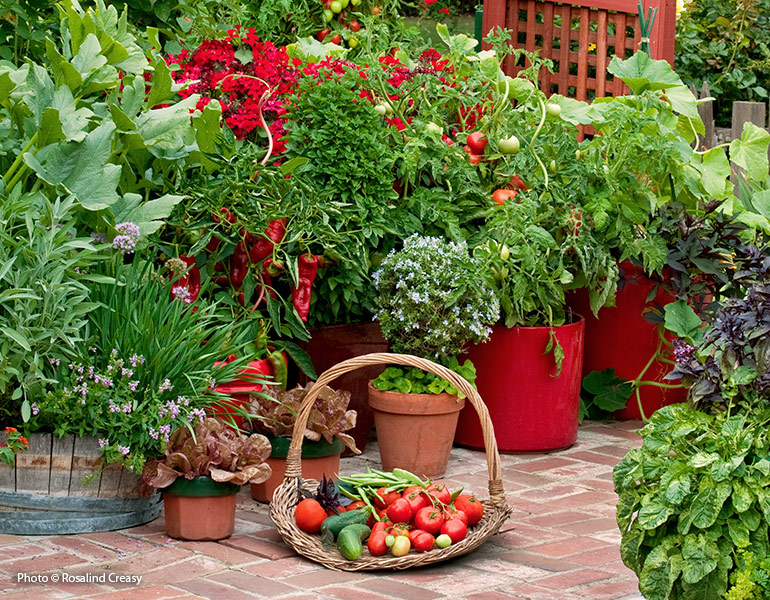
There’s nothing more appealing than the idea that the produce you eat (and feed your children) was grown in a beautiful garden and picked at peak flavor. But true garden fresh is stepping out your back door, plucking a pepper from the vine, and slicing it for a salad. Are there easy vegetables to grow that can make this a reality? Yes! When you grow your own vegetables, you get to experience the surprising and in-the-moment flavor of produce at its peak.
Upgrade to more nutrients
The longer fresh produce is separated from the plant it grows on, the fewer vitamins that vegetable retains. Transported produce is less nutritional each mile it spends on a truck. Vegetables that are harvested before they are ripe also have fewer vitamins than those allowed to ripen on the plant. Once harvested, exposure to heat, light and air reduce nutrients in vegetables. Think about what happens when you slice an apple. The browning of the white flesh is the apple starting to break down, and thereby losing some of its nutritional value. Growing your own means you’ll also be giving yourself and your family a nutrient upgrade. Luckily, there are some easy vegetables you can grow yourself so you don't have to buy all of your produce at the store.
Savor the selection of easy vegetables
You’ll be stunned at the selection of varieties of easy vegetables to grow. Many of the most flavorful new varieties and Old World beauties just aren’t available at any grocery or produce stand. For example, if you shop grocery produce sections, you can choose from a handful of different types. But if you open the pages of a seed catalog, you are presented with hundreds of different sizes, shapes, colors and flavors. Most of the vegetables in seed catalogs can only be experienced by growing them yourself. Sample peppers from Italy, carrots from France, potatoes from Peru. Your vegetable garden can be a flavor passport to different lands.
You Might Also Like:
Four Tomato Types for Your Garden
7 Easy Plants to Start From Seed
Cool-Season Vegetables to Plant in Fall
Beneficial Companion Planting
Feel good when you grow your own vegetables
Growing your own food is healthy and fun, and has so many benefits:
- It's a low-impact outdoor activity.
- Studies show that the act of gardening reduces stress while sunlight increases feel good serotonin levels in the brain.
- Raising food crops connects you with the Earth in a personal way: You develop a relationship with soil, rain and sunshine.
- And a garden can improve your social life: Planting, watering and harvesting are activities all family members, regardless of age, can participate in.
Choose organic yet easy vegetables
When you grow your own vegetables, you decide how to raise them. Organic, non-GMO, pesticide-free, or any combination of methods — do it your way. There’s an empowering element here: While the rest of the world may feel like it is spinning out of control, you can step into your garden and pick safe and delicious food. Discover just how easy vegetables are to grow.
Are you convinced you should grow your own vegetables yet? If you're just getting started, here are five easy vegetables to grow. They're perfect for beginners and time-strapped gardeners.
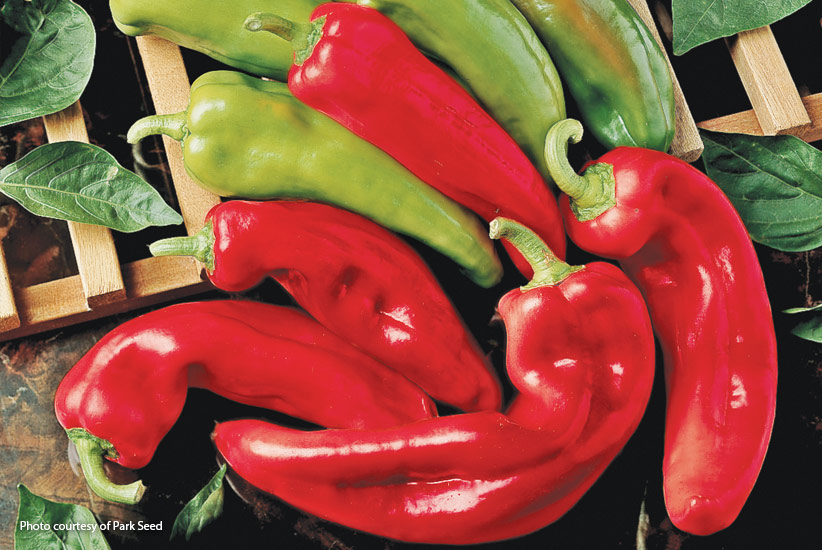
Pepper (Capsicum annuum)
Spicy yet sweet, ‘Corno di Toro Rosso’ gets its name (horn of the bull) from its long, tapered shape; peppers grow 8 to 10 in. long. This all-purpose Italian heirloom pepper is ideal for eating fresh, tossing on the grill, or stuffing and baking. Eat the peppers when green or wait until they ripen to a scarlet red. Start pepper plants indoors to get a jump on the season; it takes about 75 days to maturity. Pick from so many peppers: Walk on the wild side (a Scoville heat scale unit of 1000 to 2000) with spicy poblano peppers (called ancho when dried) or sweeten the deal with peppers on the other end of the Scoville scale, such as ‘Yummy,’ a 2-in. orange bell pepper that is as sweet as an apple. If you garden in a cooler climate, plant small peppers, such as ‘Yummy’, because they ripen faster.
Growing Tip
The easiest way to grow peppers is to buy plants at the garden center, but for more variety, start your seeds indoors several weeks before your average last frost date.
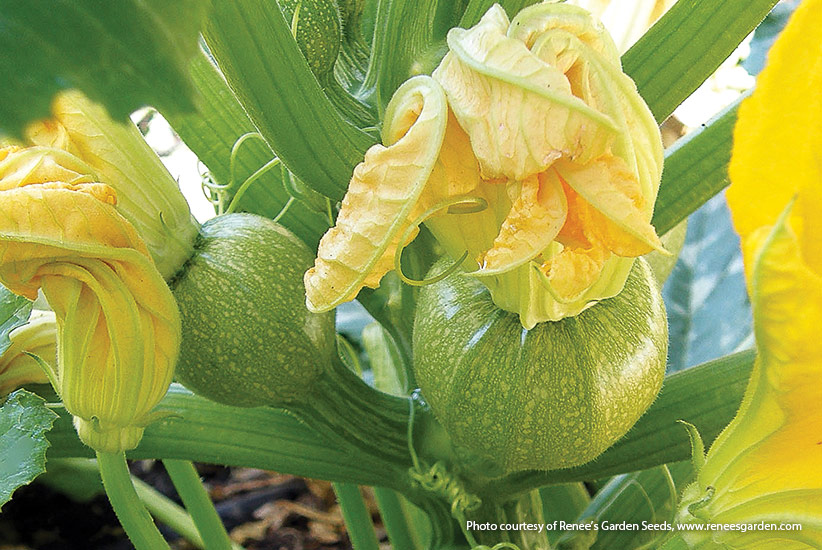
Summer squash (Cucurbita pepo)
Summer squash are prolific producers and such easy vegetables to grow. You can eat their blossoms (try them fried, baked or shredded fresh into salads). The younger the fruits are harvested, the more tender they are. A French heirloom, ‘Ronde de Nice’ is an adorable round summer squash that can be eaten when it is the size of the ball of your choice — from golf to tennis. The succulent flesh has a nutty flavor and the green mottled skin is also very tender (which is why you’ll never see it in the produce section of a grocery store). Stuff and bake it or slice it into rounds, brush it with olive oil, and toss it on the grill for easy veggie sandwiches. It’s ready to be plucked in 50 to 55 days after sowing. Plants grow 24 to 30 in. tall and 36 to 48 in. wide. Beautiful and delicious!
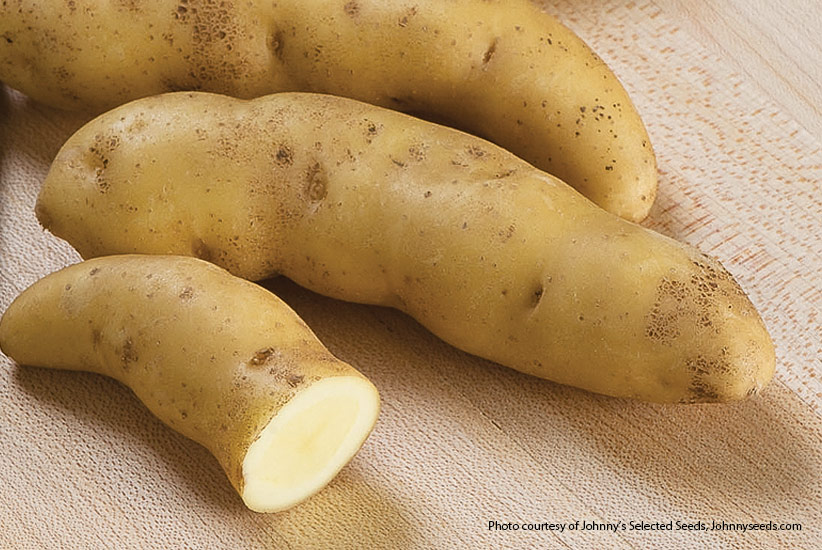
Fingerling potato (Solanum tuberosum)
You might be tempted to think the mini craze has hit potatoes, but fingerlings have been around for hundreds of years. Growing 1 to 2 in. wide and 3 to 10 in. long, these gnarly little tubers look like crooked fingers (which will make kids love to dig them up!). Oh, and they are delicious. They come in moist, waxy or dry, mealy flesh varieties (for those who have strong opinions about potato texture). And they sport bright colors, including ‘Rose Finn Apple’ which is red, ‘Russian Banana’ with yellow skin, and ‘Purple Peruvian’, featuring dark purple skin with lighter purple flesh. Freshly dug and washed, boiled in salted water, then topped with a generous slab of good butter and a sprinkle of chopped chives: simple, sumptuous and earthy.
Growing Tips
Plant fingerling pieces in loose sandy soil after the last frost in your area. Loose soil aids in easier harvesting. Not only are fingerling potatoes easy to grow, but they're ready for harvest faster than larger potatoes, as well!
You Might Also Like:
Calculate How Many Vegetables to Plant
The Best Heirloom Tomatoes to Grow
How to Sow Seeds Outdoors in Your Garden
Easy-to-Grow Heirloom Vegetables
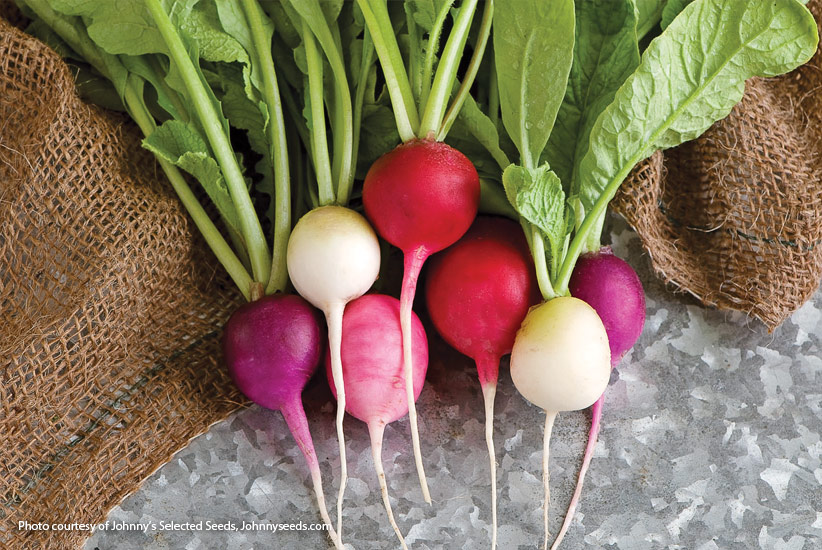
Radish (Raphanus sativus)
Radishes are the sprinters in the garden marathon. Sow seeds in early spring (2 to 3 weeks before the last frost date), then in less than a month, pluck these tangy jewels from the ground (leaving room for another radish crop or a warm-weather veggie, such as tomato or pepper). They may just be the easiest vegetables to grow of all. The Easter Egg blend is a colorful mix of round white, purple, and red crisp and mild radishes that will steal the show on your crudité platter. Other colorful radishes include ‘Beauty Heart', a whiteroot radish with red interior, oblong red-and-white heirloom ‘French Breakfast’ and pure-white carrot-shape ‘White Icicle’.
Growing Tip
Sow different types of radishes each week for a continuous crop of colorful beauties. Radishes become soft and spongy if left in the ground too long, so harvest when they are 1 in. in diameter.
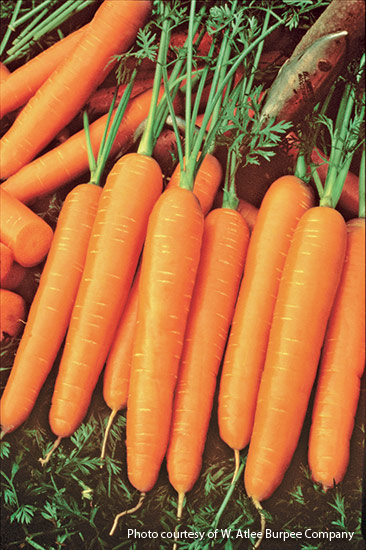
Carrot (Daucus carota)
Sweet tasting, red-orange ‘Scarlet Nantes’ don’t sport the traditional carrot taper shape. Instead these 6- to 8-in. carrots are as wide at the top as they are at the bottom. To enjoy waves of carrots throughout the summer (and beyond!), sow seeds every two weeks. ‘Scarlet Nantes’ takes 62 days to mature. Carrots and radishes make compatible bed mates; radishes are quicker to harvest, leaving plenty of space for carrots to spread out. Thin carrot seedlings to about 3 in. apart for the best harvests. Also try heirloom varieties ‘Touchon’ and ‘Danvers’.
Growing Tips
Did you know that you can keep carrots in the ground after frost in temperate regions? Mulch heavily over top, then harvest them throughout the winter.









